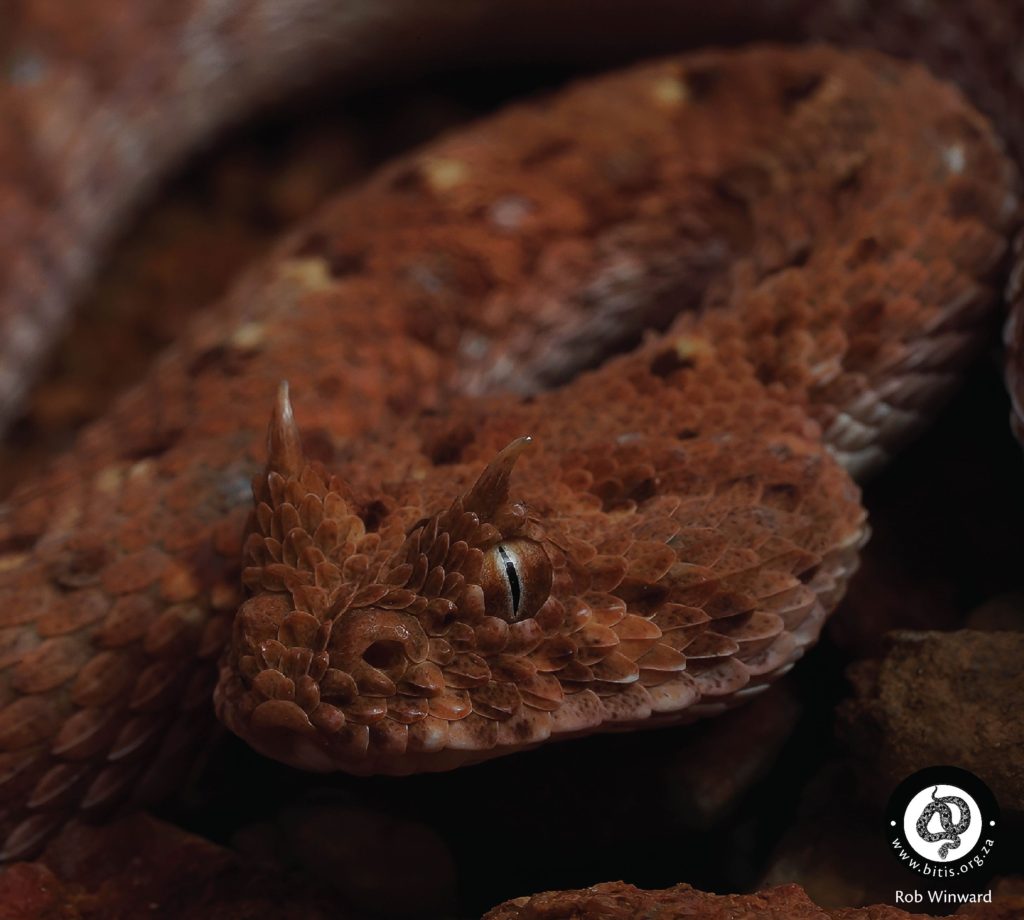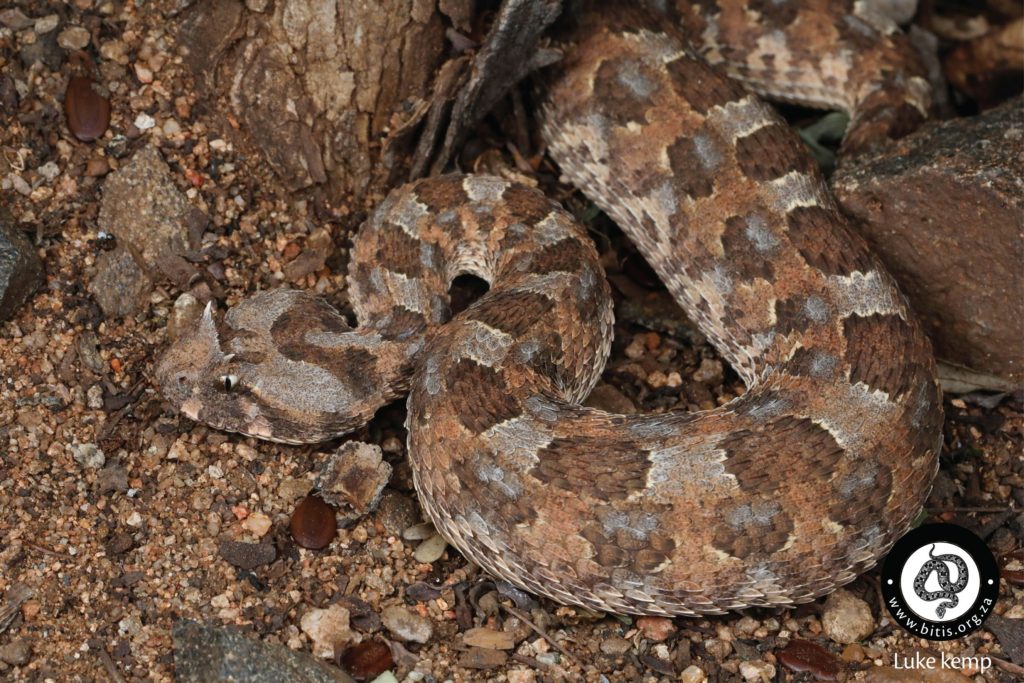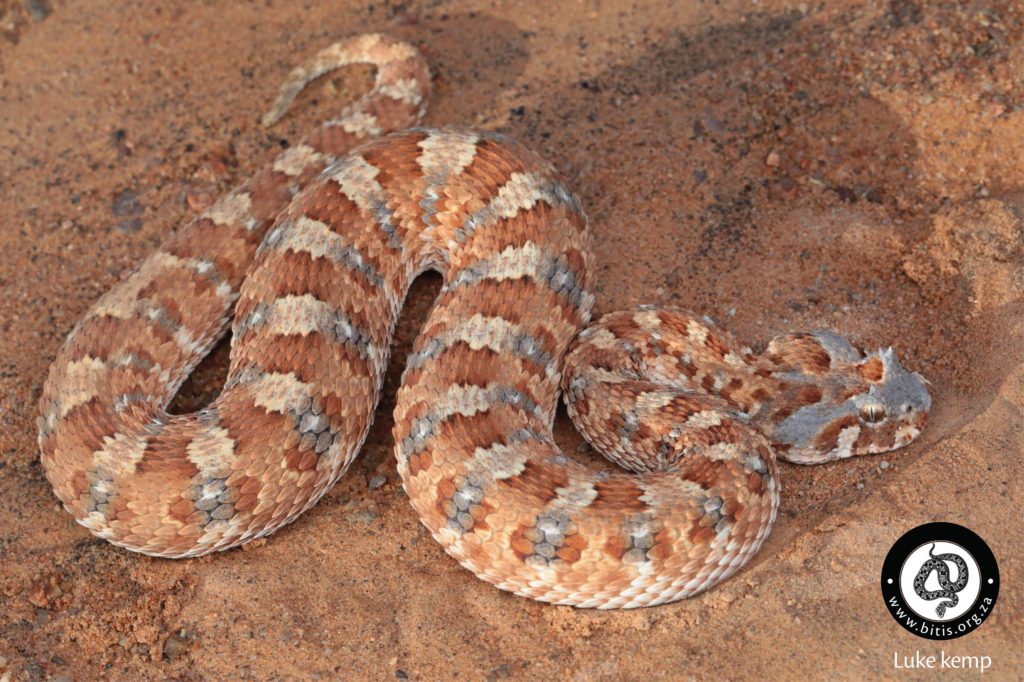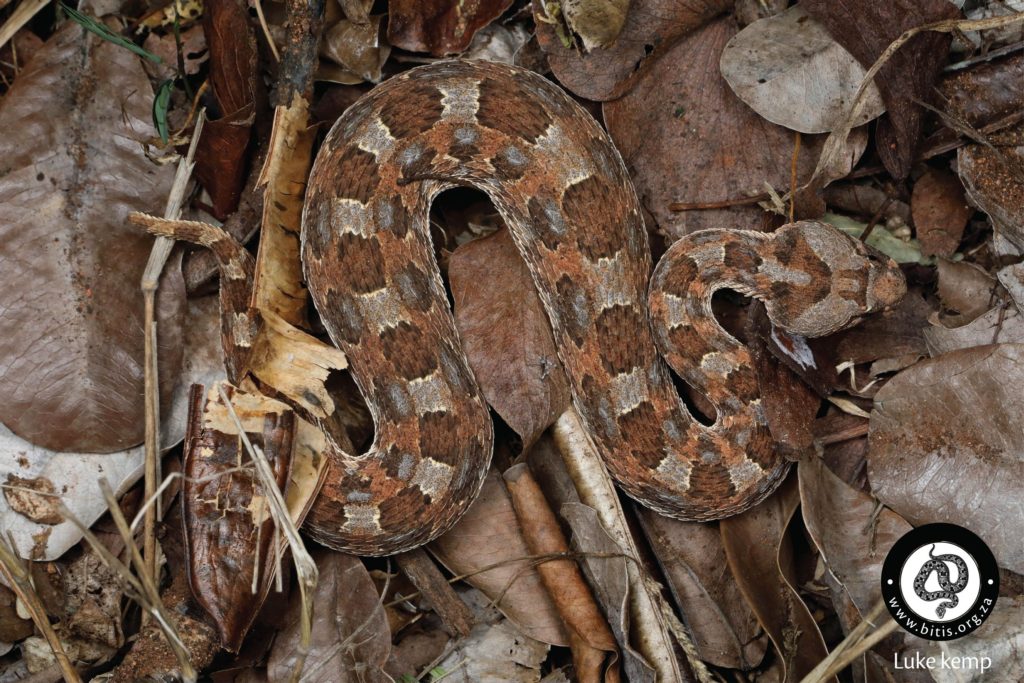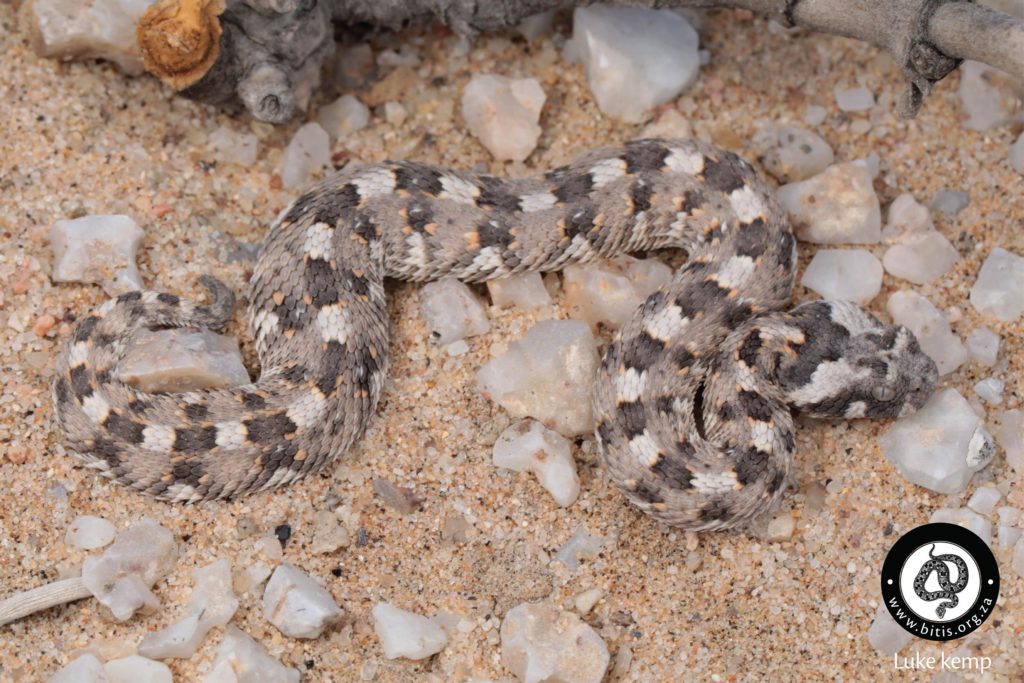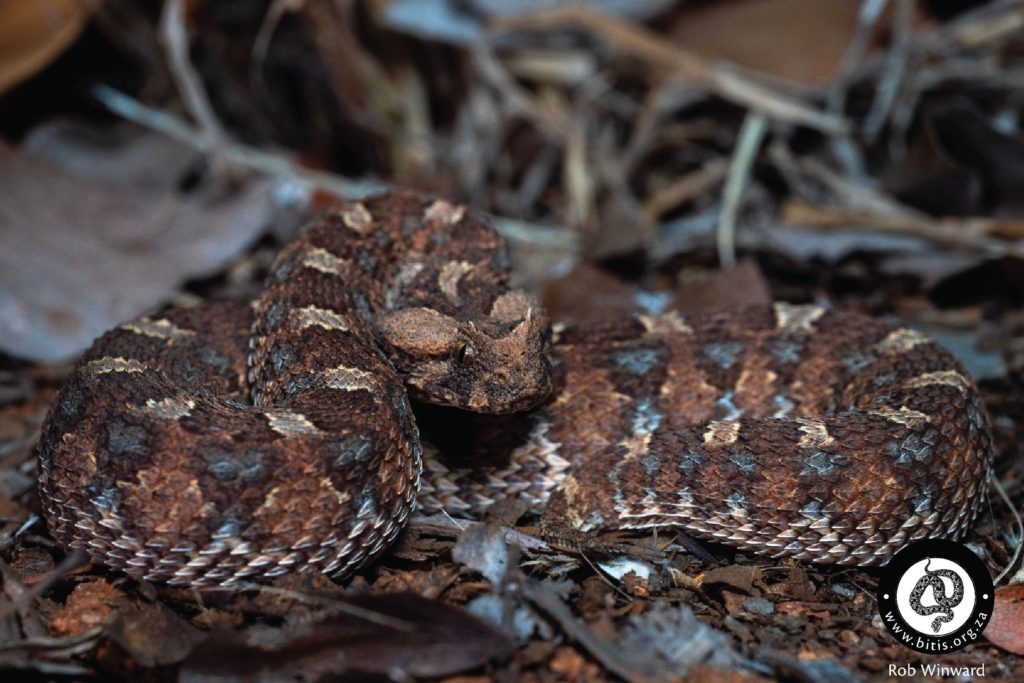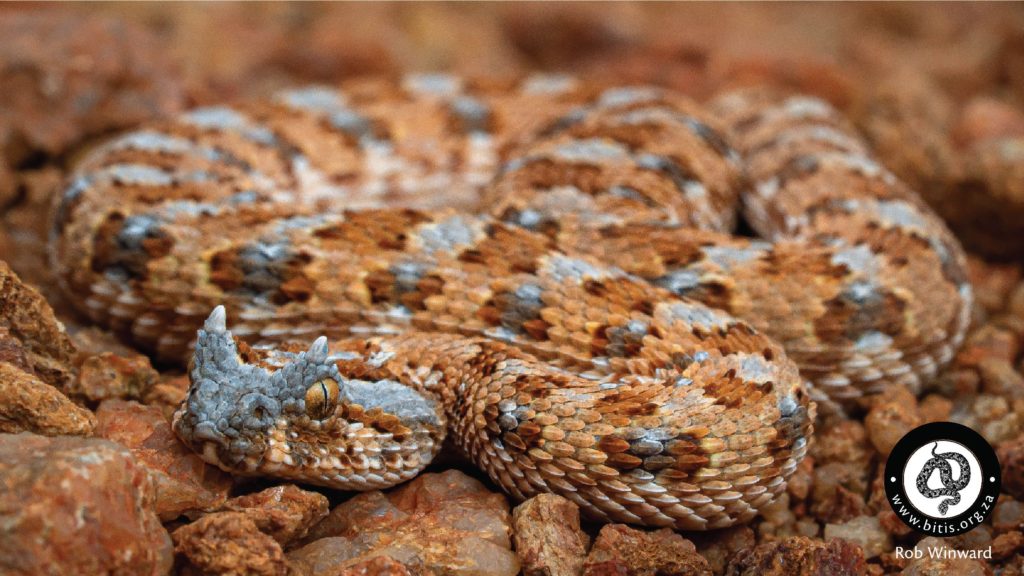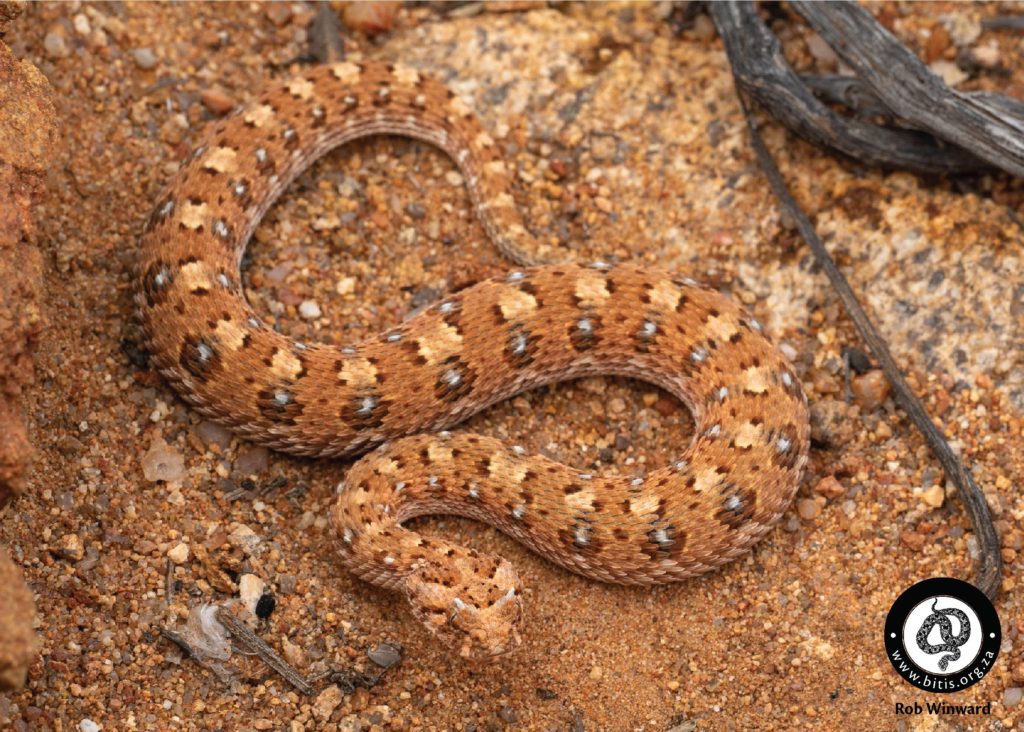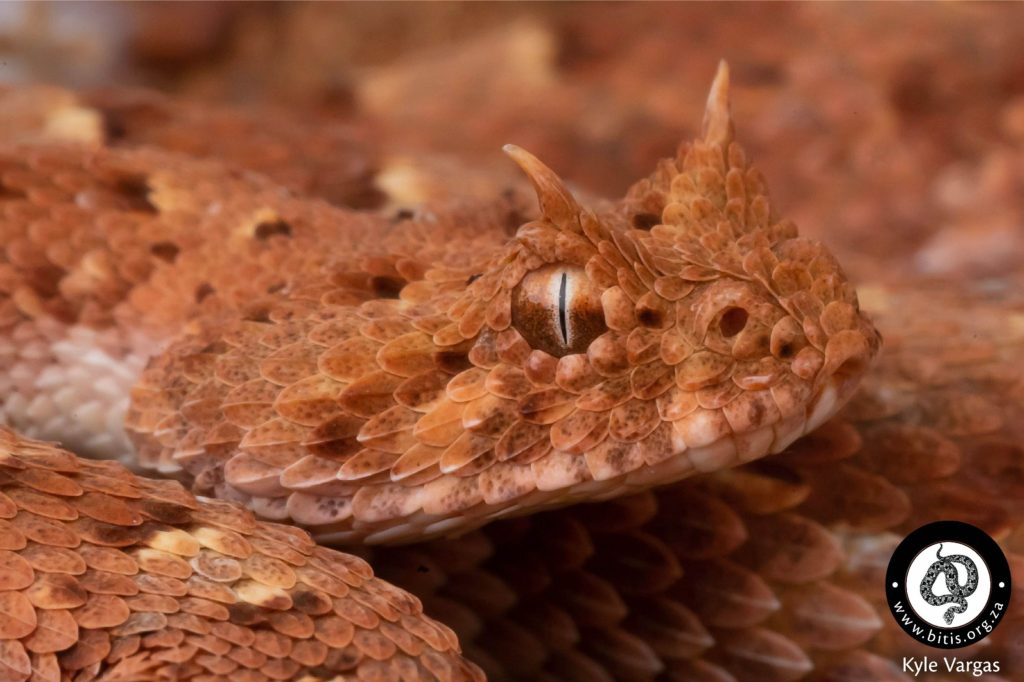Horned Adder (Bitis caudalis)
Holotype – Sir Andrew Smith collected the first specimen from “sandy districts north of the cape colony”. BMNH 1865.5.4.15a-e has been assigned as a syntype but notes in the catalogue states it agrees with the original description by Smith. The syntype/holotype is housed at the British Museum of Natural History in London, England.
Etymology – Caudalis translates from latin to “tail” and refers to this species’ tail which is often a different colour to the body and is likely used in caudal luring to attract lizards and geckos.
Previous names
Vipera ocellata – Smith 1838 (text only)
Cerastes occellatus – Smith 1839 (text only)
Vipera caudalis – Smith 1839
Cerastes caudalis – Gray 1842
Bitis caudalis – Boulenger 1896
Cobra caudalis – Mertens 1937
Bitis (Calechidna) caudalis – Lenk 1999
Species history – This species was described by Sir Andrew Smith in 1839 from the Karoo region just north of the Cape colony (now Cape Town) in South Africa. He originally called it Vipera ocellata but decided to change the name to caudalis as he believed ocellata (spotted) would cause confusion.
Description – This is one of the most widespread dwarf adders. The Horned Adder averages around 30 – 40cm but can reach 60cm. They are very varied in colour from grey to brown, yellow or red/orange and with rhombic, elliptical or square splotches down the back and splotches down either side of the body. There is often blue infusions in many localities. The coastal Namibian forms may be almost white to orange and yellow with black patterns. The horns are usually very prominent, but hornless individuals do occur. There are usually two lighter patches on the edges of the head from the eye to the start of the neck, bordered by a darker stripe. Males tend to be more vividly coloured and patterned than females.
Natural habits – The Horned Adder is the most widespread dwarf adder in southern Africa, going further north into Angola. They are common in the dry regions of the western half of southern Africa in the Karoo, Namaqualand, the Namib desert, Kalahari and up into the flats of Limpopo and northern Gauteng. The Horned Adder is usually easily identified by the prominent horns above each eye, but where hornless individuals occur, there may be confusion. In regions of Namibia there are individuals that appear to be hybrids with Péringuey’s Adder (Bitis peringueyi). These apparent hybrids may rather represent a cryptic species and genetic studies are underway. There is genetic structuring across the range and it appears Horned Adders are at least two distinct clades. Further research is required.
Venom – The venom of the Horned Adder is cytotoxic, causing sever swelling and occasionally necrosis. Other symptoms such as nausea and confusion are sometimes experienced. The venom is not life threatening and antivenom is not required.

